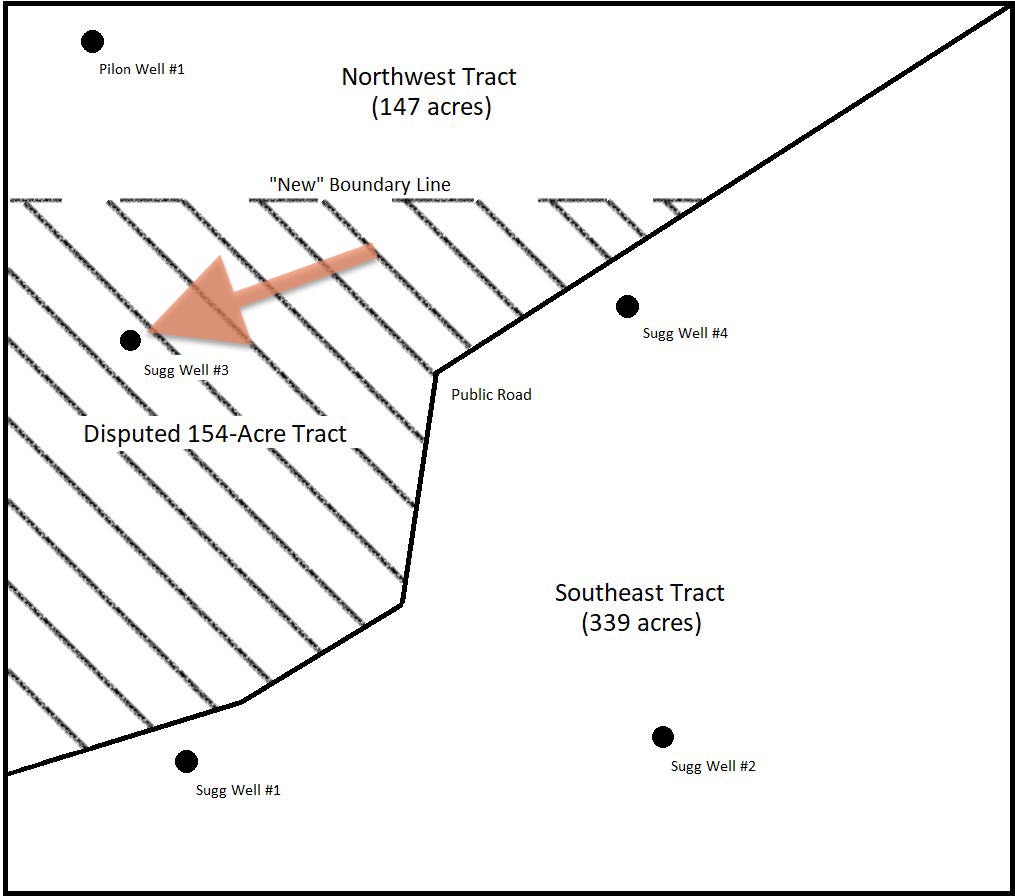SCOTX to Review Mineral Lease Boundary Dispute
In a case with potentially far-reaching consequences, the Texas Supreme Court has agreed to review the Thirteenth Court of Appeals decision in Ellison v. Three Rivers Acquisition LLC, No. 13-17-00046-CV, 2019 WL 613262 (Tex. App.—Corpus Christi Feb. 14, 2019).
The dispute centers on the border between two oil-and-gas leases, as depicted below:

In 2008, the operator on the Southeast Tract sent a so-called "boundary stipulation" to the mineral owner on the Northwest Tract. The stipulation sought to clarify that the border between the two leases was not the public county road pictured above; instead, according to the stipulation, the boundary was further north (as represented by the dashed line). The mineral owner signed the stipulation, and the operator proceeded to drill a well (the Sugg #3) inside the "new," enlarged boundaries of the Southeast Tract. (The well is identified by a red arrow on the map.)
The plaintiffs—descendants of the mineral owner who signed the stipulation—sued the operator, arguing that it trespassed when the operator drilled the Sugg #3. The plaintiffs maintained that the stipulation was ineffective because it sought to clarify an unambiguous 1927 deed that clearly established that the county road constituted the boundary between the two tracts.
The 13th Court of Appeals agreed with the plaintiffs. Writing for an undivided panel, Justice Longoria reasoned that:
The Boundary Stipulation appears to be close in nature to a “correction deed” in which a party seeks to retroactively “correct the defects and imperfections” of the original deed. Myrad Properties, Inc. v. LaSalle Bank Nat. Ass'n, 300 S.W.3d 746, 750 (Tex. 2009). A proper correction deed will relate back to the date of the deed it corrects. See id. After Myrad, the Legislature enacted statutes to allow correction deeds to make both nonmaterial and material corrections to a deed. See TEX. PROP. CODE ANN. §§ 5.027–.031 (West, Westlaw through 2017 1st C.S.). However, the underlying deed must still possess some “ambiguity or error” to correct.
Because the 1927 deed contained no ambiguity or error, the boundary stipulation was invalid as a matter of law. Additionally, the Court of Appeals pointed to a prior course of conduct by the operator indicating that the operator had historically treated the "old" border—the county road—as the correct border.
Regardless of how the Texas Supreme Court comes out on this, the moral of the story for conservative operators is clear: in situations like these, be doubly sure to draft boundary stipulations in such a way as to stave off their later classification as "corrective" instruments. As is so often the case in the oil patch, an ounce of prevention really is worth a pound of cure.


